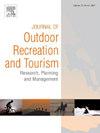基于公园类型偏好的公园空间布局优化——以改进的两步浮动集水区法为例
IF 4.4
3区 管理学
Q1 HOSPITALITY, LEISURE, SPORT & TOURISM
Journal of Outdoor Recreation and Tourism-Research Planning and Management
Pub Date : 2025-09-27
DOI:10.1016/j.jort.2025.100962
引用次数: 0
摘要
在分析公园的可达性时,通常采用两步浮子集水区(sfca)。但是,目前的方法还不支持部分功能不同、部分功能可替代的公园的分配。本研究将人群对公园类型的偏好概念和群体类型矩阵纳入可达性分析,并以成都市为例对2SFCA进行了改进。结果表明:①0 ~ 17岁、18 ~ 59岁和≥60岁人群对乡村公园、主题公园和综合公园的偏好存在显著差异,且空间分布不均匀;其次,各公园类型均呈现单峰空间梯度,中心分区可达性值最高,向周边降低。然而,这些中心街道的位置在三种公园类型中有所不同。第三,在优化方案中,以样本中令人满意的可达性值作为优化单元的目标。由于城市副核心区的两个集群被确定为缺乏公园,一个集群需要建设国家公园56509 m2,另一个集群需要建设综合公园20501 m2,东部需要建设国家公园81991 m2,北部需要建设综合公园73946 m2。此外,城市外围的区域虽然有足够的开放空间,但需要锻炼设备、玩耍和教育场所。并进一步提出相应的政策含义和措施。本文章由计算机程序翻译,如有差异,请以英文原文为准。
Optimizing spatial distribution of parks based on the preference for park types: A case study with an improved two-step floating catchment area method
2SFCA (two-step float catchment area) has been commonly adopted in the analysis of accessibility to parks. However, the allocation of parks with partly different and partly substitutable functions has not been supported by the current method. This study incorporates the conception of preference of people groups for park types and the group-type matrix into the analysis of accessibility, and improves 2SFCA for the case study of Chengdu, China. As results firstly, age groups 0–17, 18–59 and ≥ 60 have significantly different preferences for country, theme and comprehensive parks, and the spatial distribution of these age groups is not even. Secondly, for each park type, a single-peaked spatial gradient is observed, wherein accessibility values are highest in a central sub-district and decrease towards the periphery. However, the locations of these central sub-districts vary across the three park types. Thirdly in the scheme for optimization, the satisfactory accessibility values in the samples could be taken as the target for the units requiring optimization. As two clusters at the urban sub-core area are identified as lacking parks, one cluster needs to build country park 56509 m2, and the other one needs 20501 m2 comprehensive park at the east part, country park 81991 m2 and comprehensive park 73946 m2 at the north part. In addition, the area at the urban periphery requires exercise equipment, playing and educational fields although it has sufficient open space. The policy implication and measures are further proposed correspondingly.
求助全文
通过发布文献求助,成功后即可免费获取论文全文。
去求助
来源期刊

Journal of Outdoor Recreation and Tourism-Research Planning and Management
HOSPITALITY, LEISURE, SPORT & TOURISM-
CiteScore
6.70
自引率
5.30%
发文量
84
期刊介绍:
Journal of Outdoor Recreation and Tourism offers a dedicated outlet for research relevant to social sciences and natural resources. The journal publishes peer reviewed original research on all aspects of outdoor recreation planning and management, covering the entire spectrum of settings from wilderness to urban outdoor recreation opportunities. It also focuses on new products and findings in nature based tourism and park management. JORT is an interdisciplinary and transdisciplinary journal, articles may focus on any aspect of theory, method, or concept of outdoor recreation research, planning or management, and interdisciplinary work is especially welcome, and may be of a theoretical and/or a case study nature. Depending on the topic of investigation, articles may be positioned within one academic discipline, or draw from several disciplines in an integrative manner, with overarching relevance to social sciences and natural resources. JORT is international in scope and attracts scholars from all reaches of the world to facilitate the exchange of ideas. As such, the journal enhances understanding of scientific knowledge, empirical results, and practitioners'' needs. Therefore in JORT each article is accompanied by an executive summary, written by the editors or authors, highlighting the planning and management relevant aspects of the article.
 求助内容:
求助内容: 应助结果提醒方式:
应助结果提醒方式:


